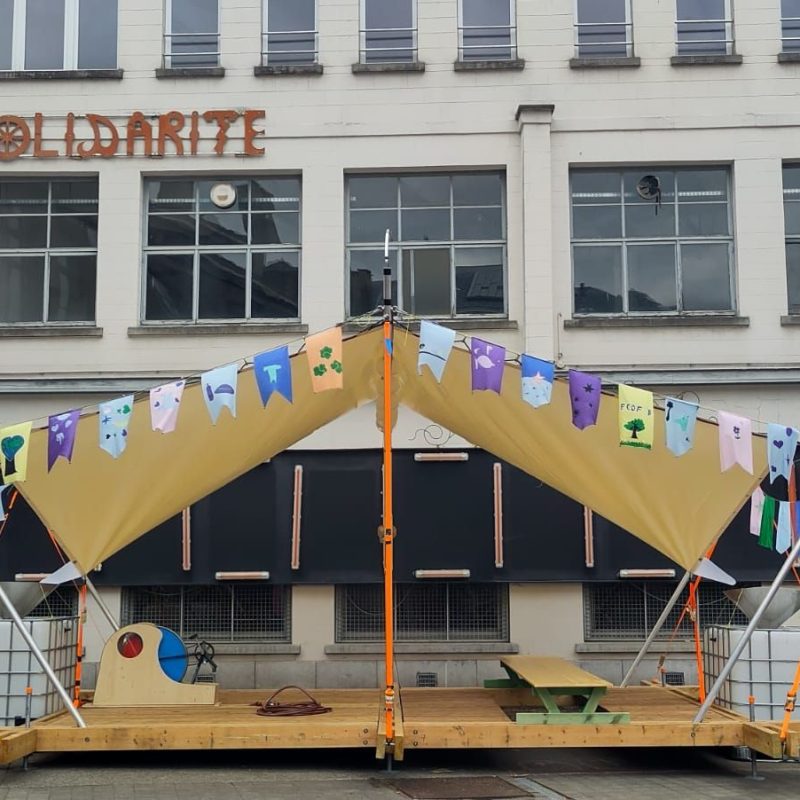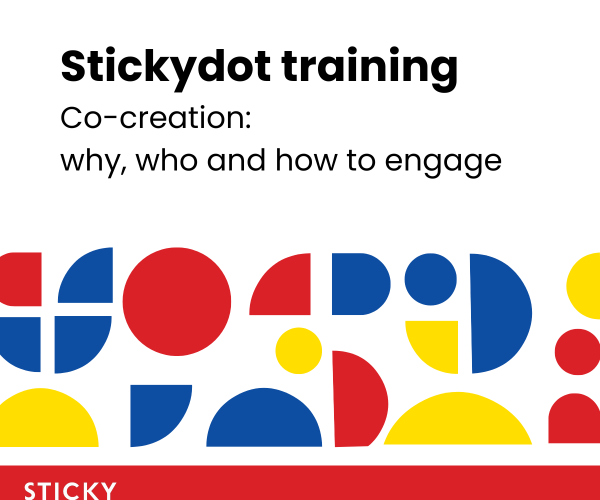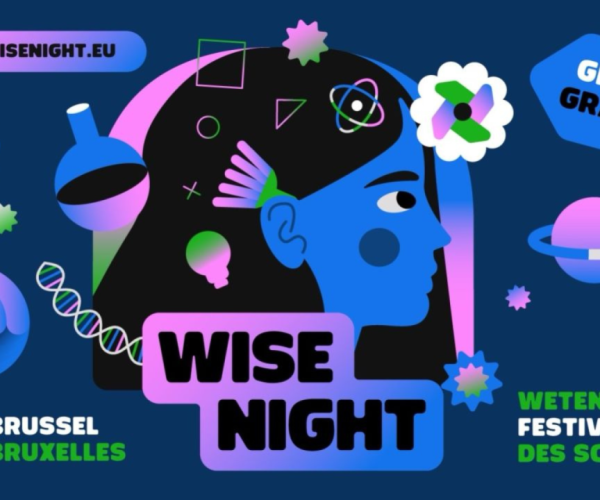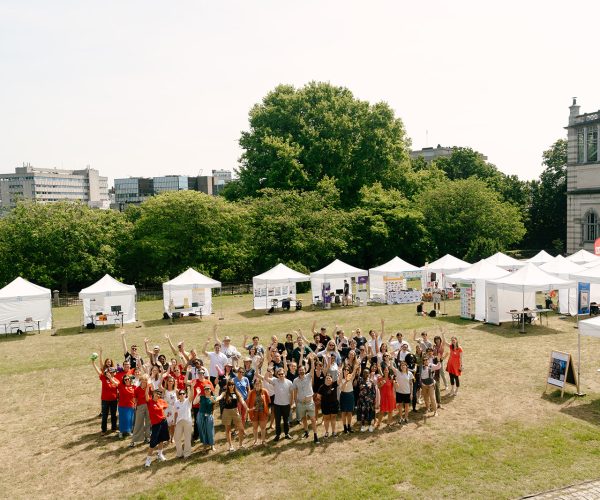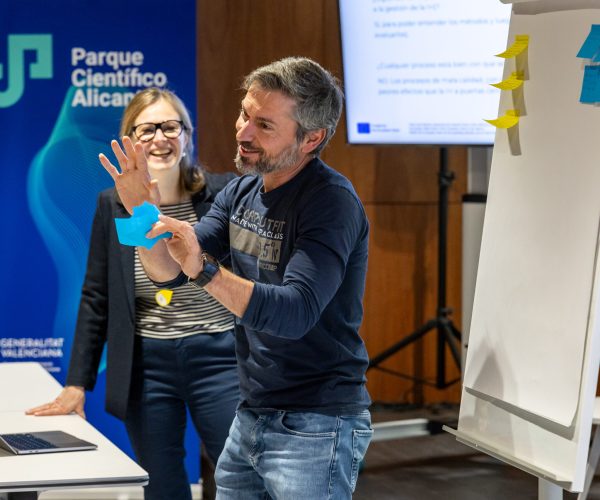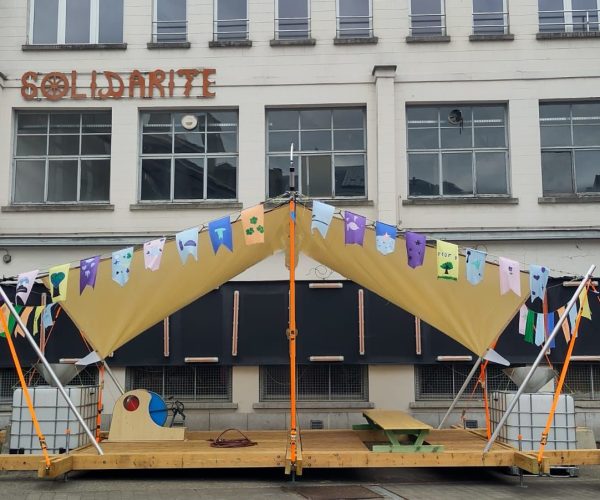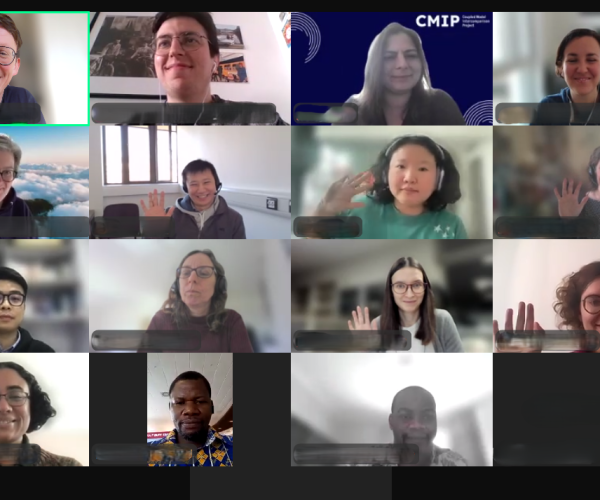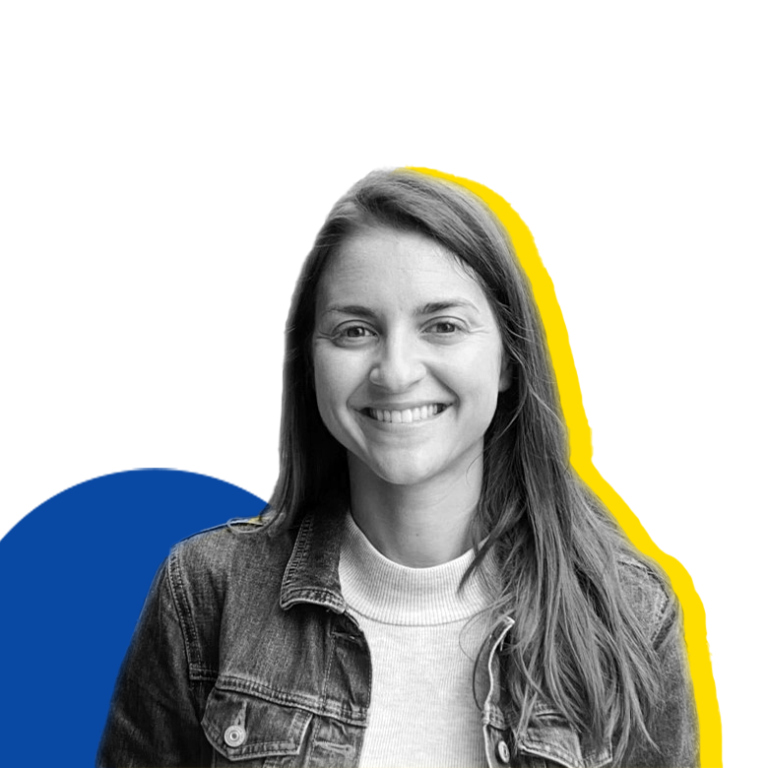Heat islands are a hot topic during the Brussels summer, as heatwaves have become an increasingly pressing issue in urban areas. This occurs where concrete-heavy areas trap warmth more than green areas, disproportionately affecting poorer communities in more heavily built-up parts of the city. But amid these rising temperatures, something cool has emerged in Molenbeek. It’s called Karavan’ke, a colourful, mobile structure co-created by two groups of local teenagers through a carefully facilitated co-creation process. More than just street furniture, it’s a community-built solution for climate resilience, as well as a symbol of youth empowerment and creativity.
Karavan’ke is the tangible result of a place-based learning journey during which the young makers, with the help of facilitators from La Maison des Cultures et de la Cohésion Sociale, designed and implemented Karavan’ke at their maker spaces Fablab’ke and FabWest in Molenbeek. This learning journey (also called Learning Venture) is one of the pilots implemented in the framework of the EU Horizon LEVERS project. LEVERS (Learning Ventures for Climate Justice) explores how local learning ecosystems can activate communities around climate justice, with a particular focus on inclusion, creativity, and citizen-led action.
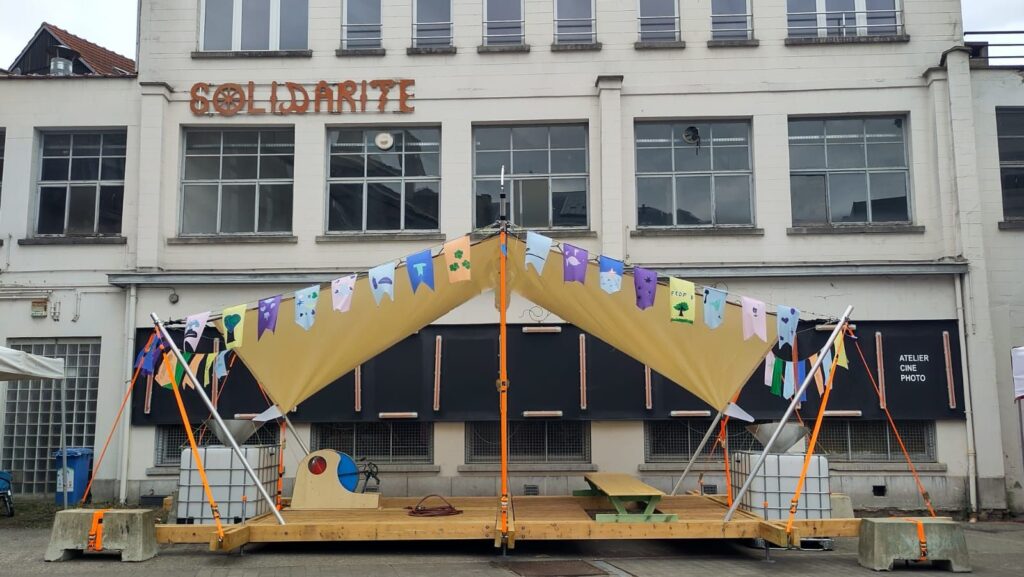
What does a different approach to climate education look like?
Too often, climate education begins with a frightening “doom and gloom” lecture on climate change. In LEVERS, the learning journey was instead crafted following a robust framework that brings together the best of place-based participatory learning and insights from social psychology and neurosciences on how to engage audiences with climate change. Instead of provoking an emotional response to the climate emergency, this approach emphasises how easy it is to take action.
Next, we went local. We set up our workshops by looking at existing local climate mitigation and adaptation actions, and where our project would fit into this ecosystem of climate action. The learning journey moved towards an exploration of how climate change impact their daily lives, their families, and their communities, and how social justice comes into the equation. In collaboration with the teenagers and a local team of facilitators, we identified extreme weather as a key focus. This critical phase of personal and collective reflection was the basis for a meaningful engagement process.
With these reflections in mind, the young makers were encouraged to dream up their own solutions to extreme heat and the ideas that emerged were as thoughtful as they were creative: shaded seating areas, solar-powered lighting, water misting systems, and mobile structures that could be moved from schoolyards to public events.
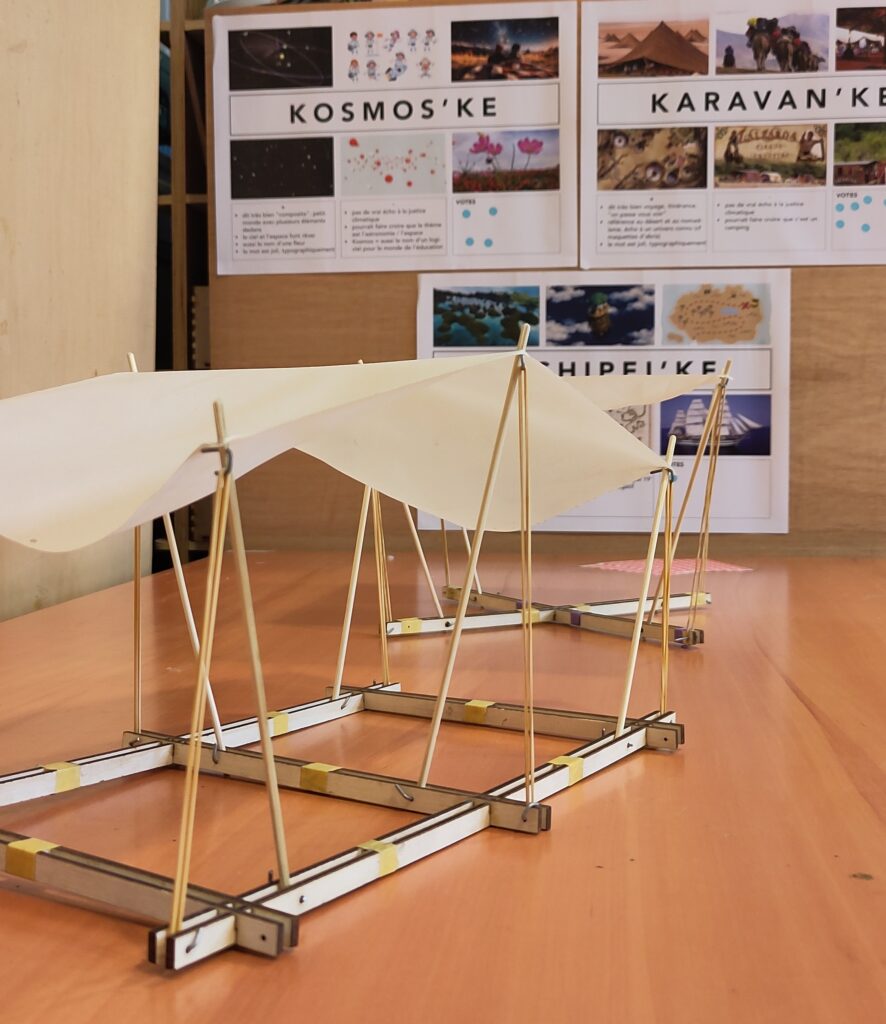
How to bring co-creation ideas to the real world?
A key component of the workshops was mentoring. Throughout the programme, each group of young makers worked closely with a designer, an architect, and a researcher in physics. These mentors did not provide ready-made answers. They challenged the teenagers to think critically, to ask questions such as: “What makes a good project? What makes it feasible and sustainable?”
The mentoring process reinforced the learning approach to the workshops. Technical know-how and DIY activities, such as welding and 3D printing, mixed in neatly with awareness raising about climate justice. Mentors, alongside the regular team of workshop leaders, created a safe learning space for dialogue, where ideas evolved through feedback and strategic guidance.
After months of prototyping and testing, the final installation was ready to be unveiled! Saturday, June 7th during the Fiesta des Ateliers, young makers, families, and wider community members were able to cool off with the moveable Karavan’ke. The name of the structure itself, chosen through a community vote, is inspired by nomadic tents, and evokes mobility, shelter, and a playful sense of community. We couldn’t ask for a more fitting name!
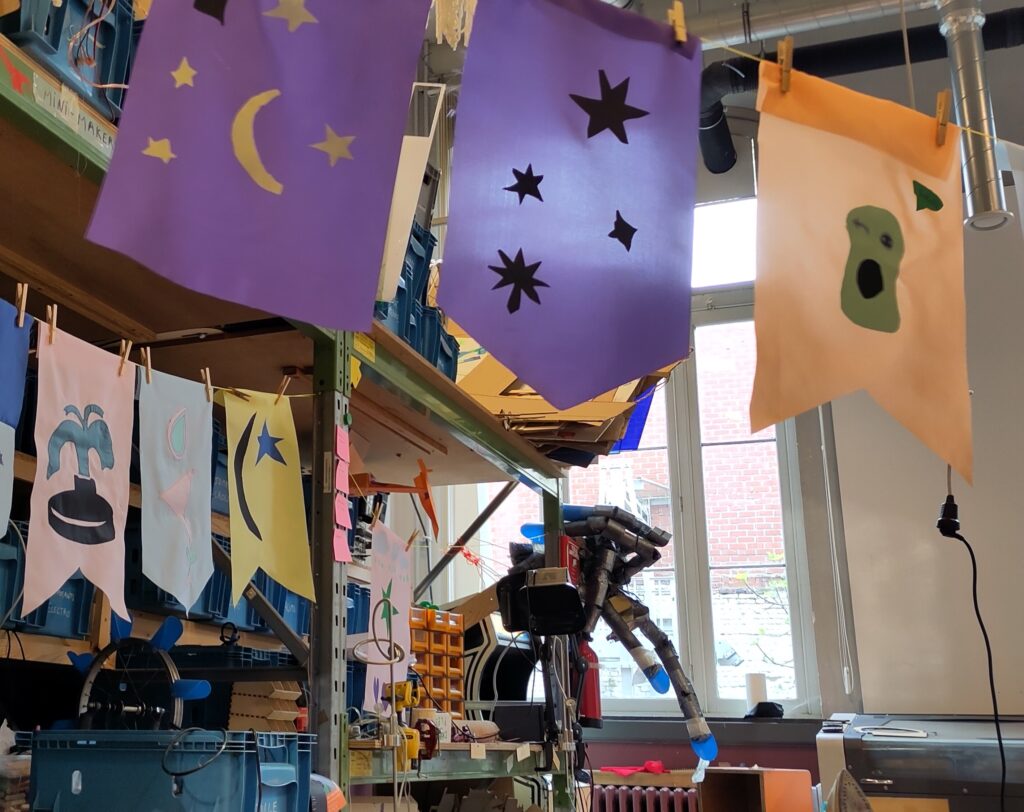
Learning ecosystems for climate justice.
The local learning venture in Brussels illustrates how education can be a lever, not just for knowledge, but also for social cohesion, creativity, action, and climate justice..
It also highlights the importance of local perspectives in climate action. The workshops are anchored in Molenbeek’s lived realities, which make the solutions relevant and rooted in the community.
Karavan’ke now continues its journey across the city, serving both as a real-life shelter and a metaphorical one: a space where community, creativity, and climate action converge. Our hope? That its travels will spark conversations, inspire replication, and remind us that grassroots engagement isn’t just a method, it’s a movement.
Written by Benjamin Valcke, Julie Becker and Melania Stăncescu
